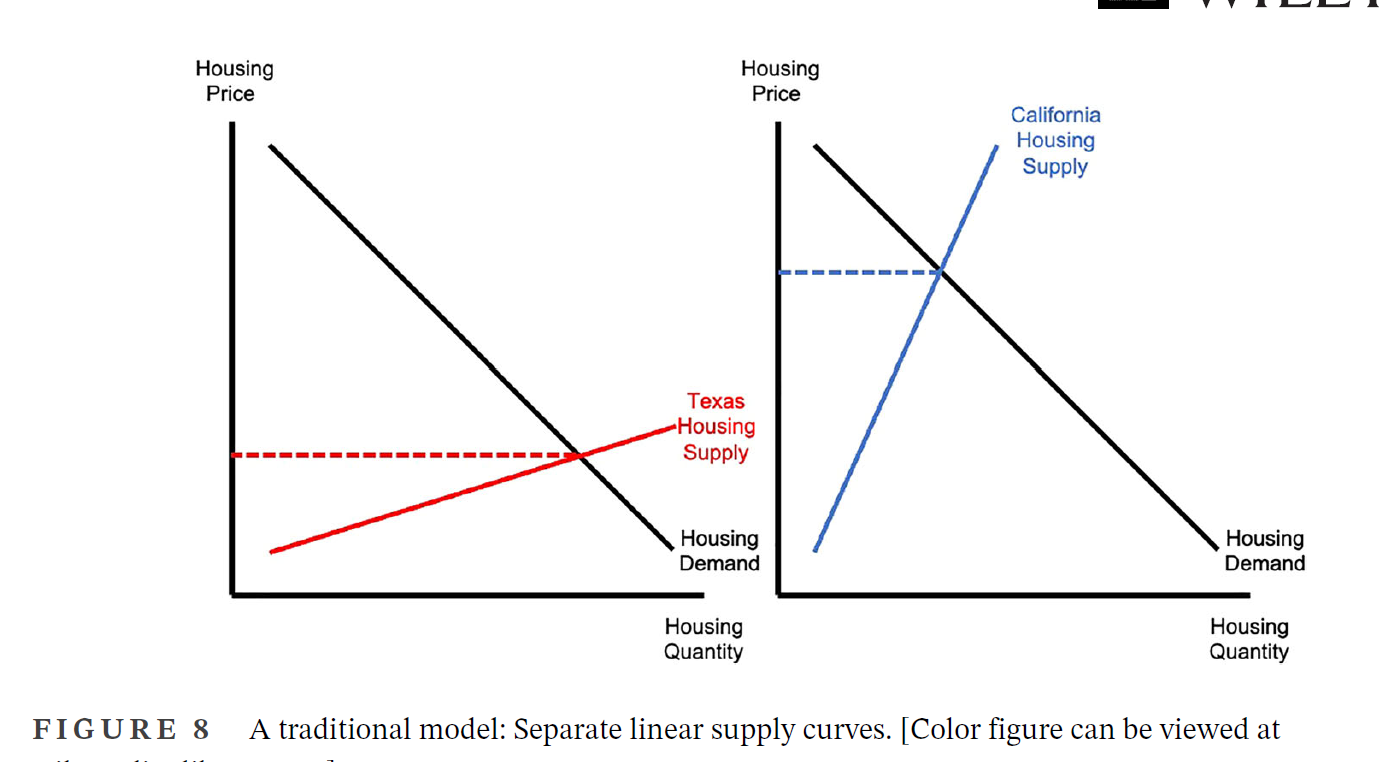Physical Address
304 North Cardinal St.
Dorchester Center, MA 02124
Physical Address
304 North Cardinal St.
Dorchester Center, MA 02124

On Marginal Revolution, Tyler Cowen linked to a new paper in Real Estate Economics by Anthony W. Orlando and Christian L. Redfearn. It’s a simple, empirical paper using data from 8 metro areas in California and Texas. It finds that net new housing creating appears to become more expensive and more likely infill as cities grow. That’s likely true, although they underrate the role of policy.
But the paper has a glaring omission. Although it is a test of a basic implication of the traditional Alonso-Muth-Mills model, the paper never mentions that model. Worse, it presents a naive supply-and-demand curve as “the traditional model” of housing supply:

To be sure, linear supply curves show up in plenty of work. But those are shortcuts, conveniences, reductions. Tradition is much richer.
Orlando and Redfearn didn’t need very complex math to show that the housing supply elasticity should fall as a city grows. Think about how much land is available at the urban fringe relative to the size of a circular city. The length of the perimeter is 2(pi)r, the area is (pi)r^2. So the ratio is 2/r.
In words: the bigger a city gets, the smaller the fringe is relative to the existing area.

A related implication is that bigger cities are more expensive, all else equal. Orlando and Redfearn find evidence consistent with this implication. In the absence of a model, their evidence leads to fatalistic conclusions:
Texas is moving more toward California-style outcomes with regard to housing supply—and therefore faces the prospect of rising house prices in the years ahead.
That’s partly true. If they put their empirics into a model, they can quantify approximately how much.
The takeaway from this new paper shouldn’t be “Texas is doomed” but “you can slightly increase your trust in the Alonso-Muth-Mills model.”
It wouldn’t have been surprising if a simplistic model of cities turned out to be unhelpful for understanding the real world. Instead, it continues to be proven useful – urbanists should be thankful to have such a powerful tool in their belts.